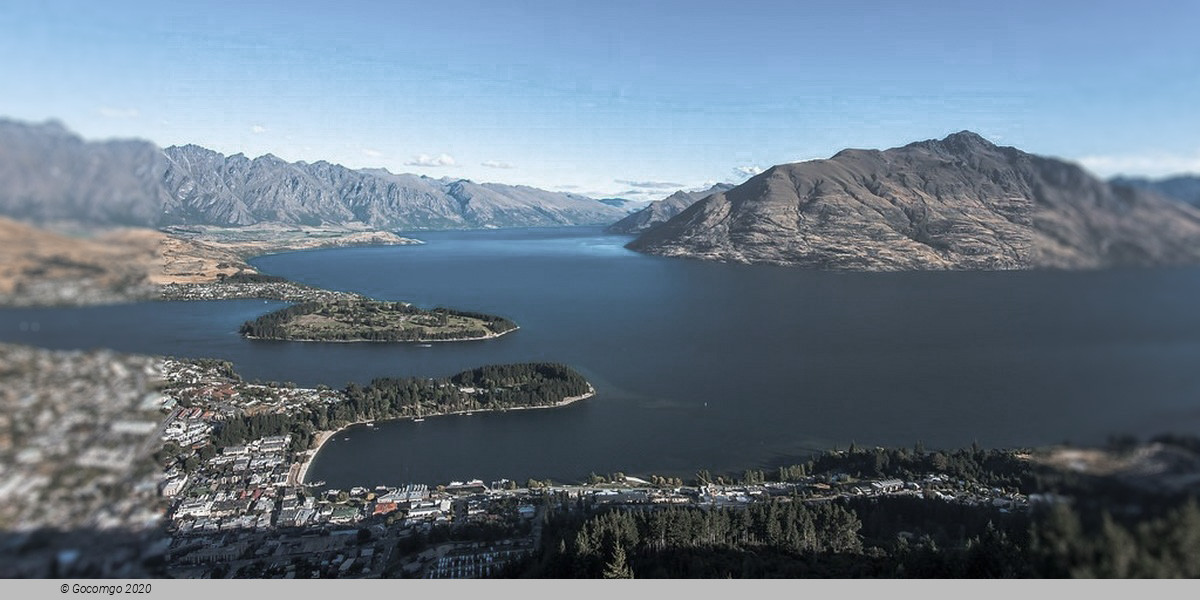Queenstown

Queenstown is a resort town in Otago in the southwest of New Zealand's South Island. The town is built around an inlet called Queenstown Bay on Lake Wakatipu, a long, thin, Z-shaped lake formed by glacial processes, and has views of nearby mountains such as The Remarkables, Cecil Peak, Walter Peak, and just above the town, Ben Lomond and Queenstown Hill.
History
Māori settlement and presence
The area was discovered and first settled by Māori before non-Māori arrived. The first non-Māori to see Lake Wakatipu was European Nathanael Chalmers who was guided by Reko, the chief of the Tuturau, over the Waimea Plains and up the Mataura River in September 1853. Evidence of stake nets, baskets for catching eels, spears, and ashes indicated the Glenorchy area was visited by Māori. It is likely Ngāi Tahu Māori visited Queenstown en route to collect Pounamu (greenstone). A settlement called Te Kirikiri Pa was occupied by the tribe of Kāti Māmoe which was situated where the Queenstown Gardens are today, but by the time European migrants arrived in the 1860s, this settlement was no longer being used.
European settlement c. 1860
European explorers William Gilbert Rees and Nicholas von Tunzelmann were the first non-Maoris to settle the area. Rees established a high country farm in the location of Queenstown's current town center in 1860, but the discovery of gold in the Arrow River in 1862 encouraged Rees to convert his woolshed into a hotel named the Queen's Arms, now known as Eichardt's. Many Queenstown streets bear names from the gold mining era (such as Camp Street) and some historic buildings remain. William's Cottage, the Lake Lodge of Ophir (now Artbay Gallery), Queenstown Police Station, and St Peter's Anglican Church lie close together in a designated historic precinct.
Naming
There are various apocryphal accounts of how Queenstown was named, however, the following is the most likely:
When William Rees first arrived in the area and built his homestead, the area was known as The Station although miners soon referred to it as The Camp from 1860 to 1862.
The miners, and especially the Irish, had taken an interest in the ceremony held for a town called Cobh in Ireland (then part of the United Kingdom) which was renamed Queenstown in honor of Queen Victoria in 1850. They may have had their own ceremony at the intersection of Rees and Beach Streets replicating some of the elements in the renaming of the Irish town.
There was then a public meeting to name the township on the lake in January 1863 (probably the weekend of the 3rd and 4th) in which the town was officially given the name of Queenstown in reference to Ireland's Queenstown. By 9 and 10 January 1863, the town was being reported with the name of Queenstown in several reports written by a correspondent in the Otago Witness on 5 and 6 January. During the meeting, there may have been a reference by a miner to the town being "fit for a Queen" (this is one of the most popular accounts of how the town was named).
Tāhuna, the Māori-language name for Queenstown, means "shallow bay".

